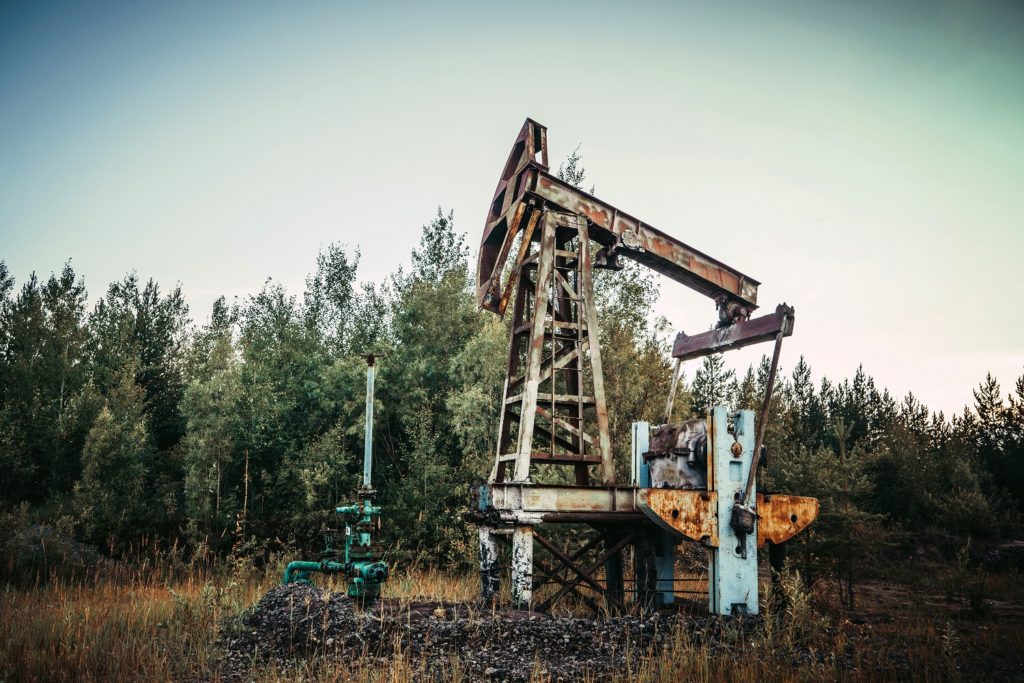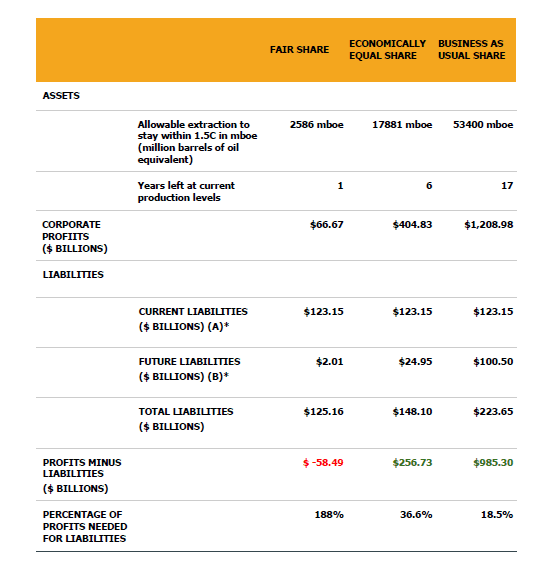INTRODUCTION
Oil and gas extraction comes at a high environmental cost. Fossil fuel companies have drilled hundreds of thousands of oil wells, created massive toxic tailing ponds, and damaged the environment in other ways. These are collectively referred to as environmental liabilities.
Despite legal requirements for these companies to clean up after themselves, oil and gas companies have not been directing their spending here. In recent years, the industry has enjoyed skyrocketing profits, but these profits have flowed mainly to investors and executives, not to cleanup costs. Meanwhile, the spectre of unfunded environmental liabilities grows more worrisome each year as the world grapples with climate change and the urgent need to phase out fossil fuels.
To get a sense of what a responsible approach to addressing these liabilities could look like, we commissioned the Parkland Institute to produce a “balance sheet.” What are the costs of cleaning up the damages left behind by fossil fuel companies? What magnitude of payments need to be made as oil and gas production levels decrease over time? And how much of their estimated profits must be directed towards this cleanup?
Our key take-away: oil and gas companies have the means to pay for the cleanup. However, companies are shirking this responsibility, instead lobbying for giant subsidies and directing their profits into shareholder dividends and share buybacks. Oil and gas companies need to be forced to use their corporate profits to clean up their mess beginning immediately to ensure those costs don’t fall to the public.
There are just a few years of remaining oil and gas production in Canada before we go far beyond our carbon budget. During these years, the oil and gas industry is expected to collect immense profits. Whether those revenues are used to clean up the environmental legacy of the industry, or whether they all go to private profit, is a question that we must address.

Oil and Gas company profits are rising. So is the cost of the industry's environmental liabilities – the mess that needs to be cleaned up
OIL & GAS PROFITS ($BILLIONS)
TOTAL CLEANUP COSTS ($BILLIONS)
0%
Percentage of profits needed to cover the cleanup of the environmental damage caused by Canada's oil and gas companies if fossil fuel production ends in 2029.
0%
Percentage of profits needed to cover the cleanup of the environmental damage caused by Canada's oil and gas companies if fossil fuel production ends in 2040
KEY FINDINGS
With a focus on the western provinces of British Columbia, Alberta, and Saskatchewan, this report examines three different timelines for phasing out the production of oil and gas, which are explained in more detail further below:
- A “Fair Share” scenario with Canada’s oil and gas production ending almost immediately, by the end of 2023. This scenario is not politically realistic, but is the only scenario which aligns with global equity, considering Canada’s historical emissions and ability to transition.
- An “Economically Efficient” scenario with current production levels continuing for six years.
- A “Business As Usual” scenario with current production levels maintained until 2040. This scenario ignores global equity.
For each scenario, the report authors compare the expected revenues from remaining production to the current and mounting cost of environmental liabilities. Under the “Economically Efficient” scenario, at least 37 per cent of industry profits must go to paying for the cleanup of the oil and gas sector’s environmental liabilities. Even with longer phaseout timelines in the “‘Business As Usual’ scenario”, nearly 20 per cent of profits must go to environmental cleanup.
Oil and gas corporate profits can cover cleanup costs. Public funding for the cleanup of environmental liabilities is an unnecessary and inefficient subsidy to oil and gas corporations. Yet, the federal government provided $1.7 billion in 2022 for this cleanup, and the Alberta government is piloting a royalty credit program which could see billions more going to subsidize wealthy oil and gas companies for cleanup that they should pay for.
Instead of providing these subsidies, governments in Canada must enforce the Polluter Pays principle which holds oil and gas companies accountable for their environmental liabilities. To date, this is not happening. Governments have not collected nearly enough money from the industry to cover these costs: Saskatchewan holds around two and a half per cent of the funds required, and Alberta holds less than one per cent for the traditional oil and gas sector and around three per cent for tar sands.
As oil and gas production decreases in order to stay within climate-safe carbon budgets, oil and gas companies must be forced to invest their profits into addressing their environmental liabilities to ensure the huge bill they are leaving behind doesn’t fall to taxpayers.

Table 1| Big Oil's Balance Sheet: the oil & gas industry's revenues, profits and liabilities

CONCLUSION
The sun needs to set on Canada’s oil and gas industry for a decent chance at meeting emissions targets and doing our part to stabilize the global climate. And in that time there are enormous environmental liabilities that need to be cleaned up. Whether those costs will fall onto the public or the companies who created the mess depends on government action.
Oil and gas companies would love to have governments and the public pick up the tab. But Canada's oil and gas industry has the ability to pay for the liability it has created, and to phase out production with a reasonable carbon budget that gives us a chance at a stable climate.
But it needs to be directed to do so by governments. Otherwise taxpayers will be on the hook.
Let's take action!
ACKNOWLEDGEMENTS:
Produced by ENVIRONMENTAL DEFENCE. Written by Julia Levin with contributions by Allen Braude. Research by Megan Egler, Parkland Institute.
For a full list of contributors please download the report.
© Copyright July 2023 by ENVIRONMENTAL DEFENCE CANADA. Permission is granted to the public to reproduce or disseminate this report, in part, or in whole, free of charge, in any format or medium without requiring specific permission. Any errors or omissions are the responsibility of ENVIRONMENTAL DEFENCE CANADA.







